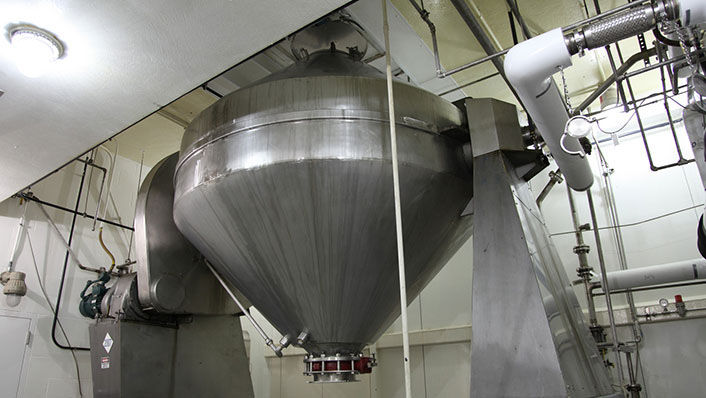A Practical Look at Flow Chemistry

There has been much discussion about the potential impact of “flow chemistry” on pharmaceutical manufacturing. While the technology does hold promise for the future, it also presents many challenges and choosing the right application will be critical to overcoming them and ensuring a successful implementation.
Flow chemistry or continuous processing has been used in several industries – including petrochemical and food manufacturing – for more than 50 years, but applications in the pharmaceutical industry are still quite new.
Typical applications are usually high-volume (100-MT plus) processes with robust reaction kinetics and conducted as single-step chemistry with a purification step added. In processes where two to three reactions occur, they are done in separate units connected by “day tanks” (surge capacity). For example, a continuous nitration unit feeding a continuous hydrogenation unit is the classic way to produce aniline. The robust reaction kinetics allow for continuous processing, whereas a slow reaction – perhaps requiring an 8- to 10-HOUR hold – could not run continuously.
Many new APIs in the pipeline are indicated for niche markets. These new chemical entities (NCEs) are sophisticated compounds with a high degree of functionality and, typically, require multi-step synthesis. Some compounds have more than six reaction steps with some reactions requiring long hold times.
One of the major challenges of continuous manufacturing/flow chemistry production is the upfront time and cost. The complicated nature of these methods and multi-step chemistry usually requires specifically designed, dedicated facilities which do not currently exist in most Pharma sites.
These routes must first be developed in a lab, after which a pilot plant is typically built and operated, often for years, to work out the quality, safety, and final design issues while a dedicated plant is constructed. If demand for the product or process decreases or goes away, these plants are left idle, as they normally cannot be repurposed for another product.
Chemistry and cost challenges may also be exacerbated if a medication carries the demand for rapid speed to market to fulfill unmet treatment needs, which many NCEs do. For example, an oncology drug given breakthrough status coming out of phase II may require multiple reaction steps, and yet the total projected commercial volume may be less than 5000kg. So, while such a drug may seem like a good candidate for continuous processing, given the speed at which these compounds are brought to market, it would be unreasonable to design and build a dedicated pilot facility and then a dedicated commercial manufacturing unit.
The expectation is that the dedicated large-volume manufacturing unit will be needed to produce both late-stage clinical and commercial launch volumes. However, even with an accelerated approval process, there is always the risk that the drug may fail during late-stage clinical trials. The design of a continuous processing unit for this oncology drug is unlikely to fit the manufacturing requirements of a different compound, and the investment costs and resources put into dedicated facilities are often not recoverable. These risks need to be considered when weighing the perceived advantages of continuous processing.
So, the question is: what applications are appropriate for this technology in the pharma industry? Companies should ensure that certain criteria are met before implementing continuous processing.
- Are the reaction kinetics fully understood?
- Do they allow for the application of continuous processing?
- Do the volumes justify the resources and cost required to design, pilot, and build a continuous processing operation?
Drugs intended for large-volume markets, such as heart disease and pain management, may justify such an undertaking, but more targeted and personalized medicines certainly may not meet the economic and technical standards.
Grace Fine Chemical Manufacturing Services (FCMS) has had successes in applying continuous manufacturing to replace batch processes when appropriate. For example, Grace FCMS developed a continuous hydrogenation route to produce para-toluidine. The synthesis of an agricultural intermediate was converted, which allowed a four-fold capacity increase in the same equipment. This change greatly improved the process safety of a peroxide oxidation synthesis step. Grace FCMS also developed a continuous process for the synthesis of a fine chemical that required critical reaction stoichiometry and operated in liquid ammonia as the solvent for the process. In both cases, a significant reduction in manufacturing costs was realized. It should be noted, however, that the product demand was well-defined, and the market was large enough to justify the investment in development and piloting time.
Grace FCMS will continue to do continuous feeds and co-feeds for safety and quality purposes, as well as continuous distillations and WFEs for purifications. The combination of these techniques, combined with batch processing, offers the ability to create fast flexible solutions for bringing novel, life-improving APIs to the market in the shortest time possible at the lowest total cost. While flow chemistry may not be the ideal solution for every product, we will seek to apply it to the highest standards when the right opportunities arise.